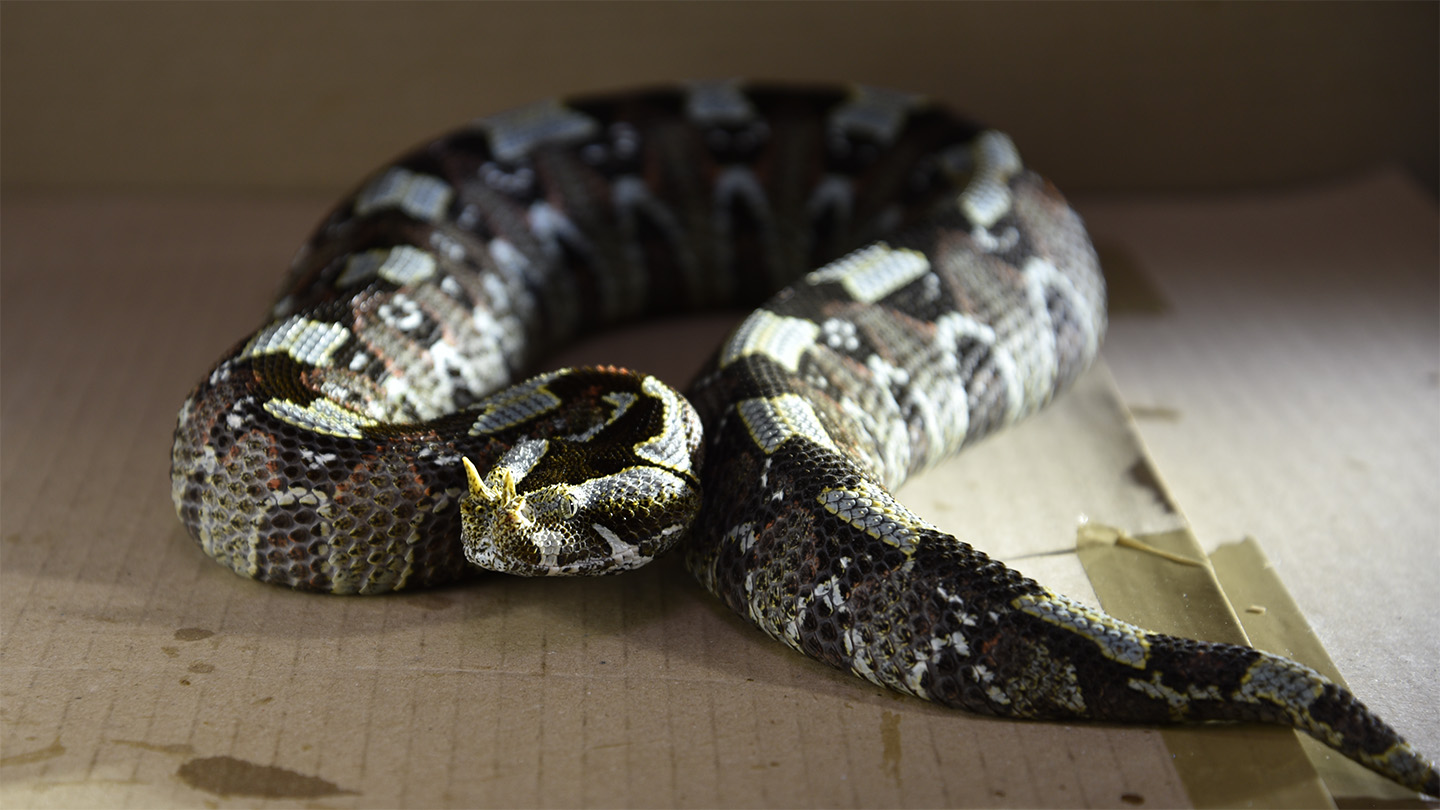Some vipers are the sprinters of snakes.
Vipers wielded the fastest attacks in a comparison of 36 venomous snakes from three families, researchers report October 23 in Journal of Experimental Biology. And the quickest vipers tend to be ambush predators and feed on mammals. The terciopelo (Bothrops asper) — a viper found from eastern Mexico to northern South America that feeds on birds and rodents — came out on top with an average peak velocity of 3.5 meters per second.
“They are the ones that have to be able to strike as quickly as possible,” says Alistair Evans, a zoologist at Monash University in Melbourne. It typically takes mammals between 60 to 400 milliseconds to react and jump away from an attack, making speed crucial. Large snakes also tend to be faster because, like sprinters, they have more muscle.
Previous studies analyzing snake speed typically relied on a single camera or one with low resolution. Others focused on just a few species. The new study includes 31 vipers, four snakes from the elapid family (which includes cobras), and one colubrid, representing the largest snake family that includes the nonvenomous common garter snake (Thamnophis sirtalis).
Evans and colleagues used two high-speed cameras to track snakes housed at Venomworld, a production facility in Paris that provides venom for medical and pharmaceutical purposes. The team coaxed each snake to lunge at fake prey in the form of warmed ballistics gel, a kind of gelatin that mimics muscle tissue.
Vipers including the terciopelo, the horned pit viper (Protobothrops cornutus) and the blunt-nosed viper (Macrovipera lebetina) had maximum speeds that exceeded 3.3 m/s. The rough-scaled death adder (Acanthophis rugosus), the fastest elapid, jabs toward prey at 2.2 m/s, roughly the same strike speed as some vipers, including the eastern rock rattlesnake (Crotalus lepidus). The mangrove snake (Boiga dendrophila), the sole colubrid, was slightly slower, moving at roughly 1.8 m/s.
The cameras also captured differences in how snakes bite. Vipers deliver venom with smooth, fast strikes, while elapids bite and squeeze their prey multiple times. Fischer’s cat snake (Toxicodryas pulverulenta), a colubrid not included in the speed analysis, uses its fangs to slash large wounds in its victim.
Because Venomworld houses mostly vipers, the study was heavy on those snakes. But there are roughly as many elapid species as vipers, Evans says, and colubrids are even more diverse. Hiding among their ranks could be snakes that give some vipers a run for their money.




